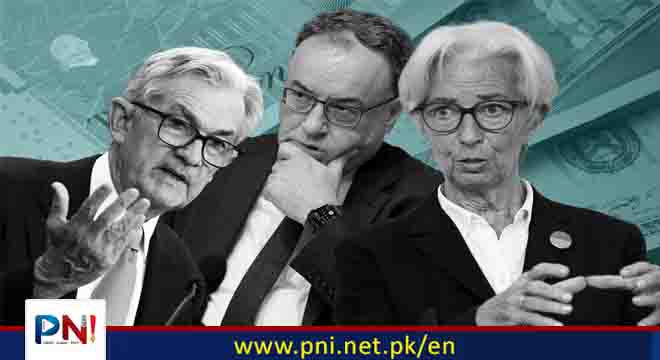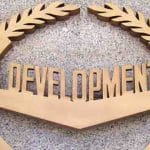Washington, July 27 (AFP/APP): The US Federal Reserve’s united front against inflation could be harder to hold together going into the next hike in September, with strong economic data and falling inflation figures fueling disagreement over the best path forward.
Analysts are divided ahead of the Fed’s next decision in September, with the so-called “hawks” predicting additional rate hikes in the face of strong economic data, and “doves” expecting an end to the current hiking cycle given recent inflation data.
Thursday’s GDP figure for the second quarter came in above analysts’ expectations, a day after the Fed voted unanimously to hike its benchmark lending rate to its highest point for 22 years.
The US central bank also left the door open to additional rate hikes, if needed, to get inflation down to its long-term target of two percent.
“It’s really a question of how do you balance the two risks: the risk of doing too much or doing too little,” Fed chair Jerome Powell told reporters after the latest Fed decision was announced on Wednesday.
“We’re coming to a place where there really are risks on both sides,” he said.
“We think markets continue to underestimate the likelihood of further tightening and expect another 25bp hike in September,” Bank of America wrote in a note to clients on Thursday morning.
But economists at Deutsche Bank wrote to clients that Wednesday’s hike is likely the last of the cycle, “as somewhat faster disinflation coupled with a softening in growth and the labor market” become more evident in the coming months.
– Recession risk –
The positive economic data has raised the chances the Fed could engineer a so-called “soft landing,” where it brings down inflation through rate hikes while avoiding a recession and high unemployment.
On Wednesday, Powell told reporters that Fed staff no longer expects a recession to start later this year.
“The staff now has a noticeable slowdown in growth starting later this year in the forecast, but given the resilience of the economy recently, they are no longer forecasting a recession,” he added.
But he also indicated the fight against inflation is far from over, telling reporters on Wednesday that the Fed’s “policy has not been restrictive enough for long enough to have its full desired effects.
“The Fed is keeping optionality for future rate increases but it probably won’t need them,” Edward Moya, OANDA’s senior Americas market analyst, wrote in an investor note.
“The Fed is most likely done raising rates,” he added.
– The last unanimous hike? –
The decision to hike a quarter percentage-point was unanimous, with all 11 voting members of the Federal Open Market Committee (FOMC) voting for the 11th hike of this cycle, which raised the benchmark lending rate to a range between 5.25 and 5.50 percent.
Analysts and investors will be closely parsing the minutes of the FOMC meeting when they are published next month for signs of disagreement among members going into the meeting — as was the case in June.
Since that meeting, a number of FOMC members, including governor Christopher Waller and Dallas Fed president Lorie Logan, have said they wanted to hike in June, but ultimately voted for a pause.
Other more dovish members of the FOMC like Chicago Fed president Austan Goolsbee have indicated that, while the Fed could yet move ahead with another hike, things are going in the right direction.
“The Fed’s overriding goal right now is to get inflation down. We’re going to succeed at it and to do that without a recession would be a triumph,” he told CNBC in early July.
“That’s the golden path, and I feel like we’re on that golden path,” he added.
In June, a majority of FOMC members penciled at least two hikes before the end of the year in order to tame inflation.
Wednesday’s hike means another quarter percentage-point hike could be in the cards in one of the three remaining meetings this year.
Powell has pledged to continue with the Fed’s “data-dependent” approach to rate hikes going into the next meeting in September, with two more inflation and jobs releases due before then.
Futures traders currently assign a probability of just over 20 percent that the Fed will hike again in September, according to data from CME Group.
Follow the PNI Facebook page for the latest news and updates.








